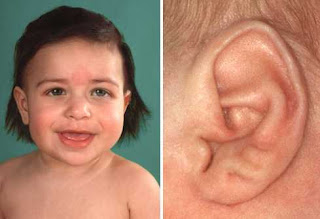Stay Home if You Are Sick
Two recent publications serve as yet another reminder that healthcare
workers (HCWs) should avoid patient care duties when feeling ill.
Esbenshade and colleagues performed
prospective biweekly surveillance to assess influenza and other
respiratory virus shedding in a cohort of hospital-based HCWs between
November 2009 and April 2010. During the 20-week study period, 1404
nasal swab specimens were collected from 159 physicians, nurses, and
ancillary staff working in patient care areas. Multiplex respiratory
virus polymerase chain reaction was also performed on 119 specimens from
83 ill HCWs and 200 specimens from 106 randomly selected asymptomatic
HCWs.
Forty-two specimens were positive: 35 (29.4%)
obtained from ill HCWs and 7 (3.5%) from asymptomatic HCWs. Human
rhinovirus was the most commonly identified virus (n = 33), followed by
coronavirus and parainfluenza virus (n = 4 each) and human
metapneumovirus (n = 1). No influenza was detected, which was believed
to be related to the atypical influenza season in 2009-2010 as well as
the high level of vaccination among participants (74.2%).
Multivariate analysis demonstrated that viral
shedding was strongly associated with report of any symptoms (odds
ratio [OR],13.06; 95% confidence interval [CI], 5.45-31.28; P < .001) and less strongly associated with younger age (OR 0.96; 95% CI, 0.92-0.99; P = .23). In a postsurveillance survey, 46% of study participants reported working with an influenza-like illness.
The Centers for Disease Control and Prevention report on an outbreak
of severe respiratory illness at a 12-bed assisted-living facility in
Colorado in 2012. Two confirmed and 5 probable cases of infection caused
by Streptococcus pneumoniae were identified in the
investigation. Six of the patients (2 confirmed, 4 with probable
pneumococcal disease) were residents of the assisted living facility,
and 1 patient with probable pneumococcal disease was a staff member at
the facility.
Five of the 6 residents required
hospitalization, 2 developed invasive disease with bacteremia, and 3
died. The 2 isolates obtained were serogroup 3, with identical
antimicrobial resistance patterns. Review of symptom onset and duration
revealed that the staff member had the earliest onset of respiratory
symptoms and continued to work while symptomatic, suggesting a possible
source of the outbreak.
Both studies highlight the potential for transmission of respiratory
pathogens to vulnerable patient populations by HCWs and the consequences
that may be associated with presenteeism by employees when sick. HCWs
often feel a duty to come to work at all costs because of staffing
issues, and they may not understand that their actions can come at a
higher cost to patients and colleagues. Infection control programs may
need to engage administration to improve staff support and remove
financial repercussions in an effort to convince HCWs to avoid patient
care while ill.




Comentarios
Publicar un comentario